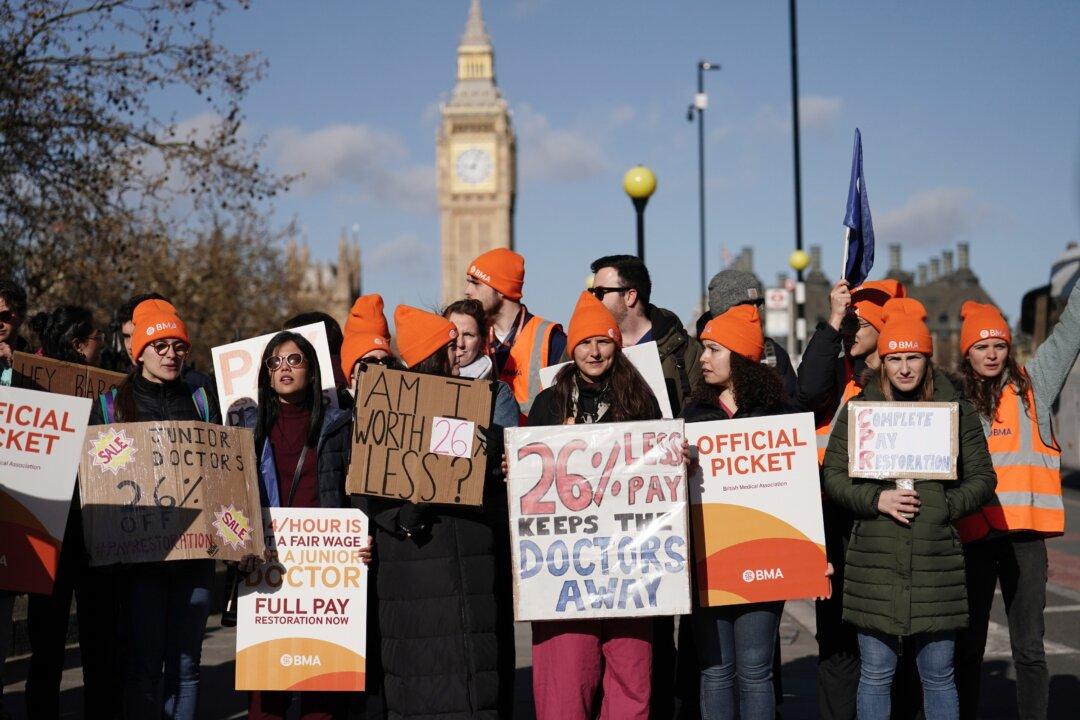Britain has been affected by more than five million days lost due industrial action from June 20022 to Dec. 2023, new data has revealed.
The Office of National Statistics (ONS) has released the latest figures on labour disputes across the UK. The current strike period led to 5.05 million missed days and is the highest figure for a 19-month period in decades.
The last time when UK workers missed more days in labour disputes was in the period from July 1989 to January 1991.
The ONS graph peaked in December 2022, when 830,000 days were estimated to have been missed. That month saw thousands of railway, Royal Mail, ambulance, airport and border control and postal workers take part in industrial action.
Since then the trend slowed down overall, with another, yet much lower, peak in March 2023, marking 556,000 missed days. This was the result of strikes by the members of the Rail, Martine and Transport (RMT) union, nurses, teachers, civil servants and junior doctors.
In the latest recorded month of December 2023, the ONS reported 108,000 missed days as a result of strikes.
The PA news agency analysis of the current labour action period showed that 45 percent of the working days list was due to strikes in transport, storage and communication industries.
Strikes in the education sector accounted for 24 percent, while health and social work action added up to 19 percent. Industrial action by public administration workers comprised seven percent of the missed days.
Fresh Wave
This comes as junior doctors are preparing for further strikes in February, following the longest industrial action in the NHS history that took place in January. Junior doctors and hospital dental trainees walked off for six days in January over a pay dispute with the government.The British Medical Association has described “the glacial speed of progress” of negotiations with the Government as “frustrating and incomprehensible.” Meanwhile, Health Secretary Victoria Atkins said that the BMA junior doctors already have an offer of a pay increase of up to 10.3 percent.
Ms. Atkins called on the BMA’s Junior Doctors Committee to cancel their action that will put “enormous pressure on the NHS.”
Costs and Legislation
Last year, the Centre for Economics and Business Research (CEBR) estimated that the impact of industrial action on GDP between June 2022 and April 2023 was £1.4 billion, or £127 million per month.The figure was lower than the previously expected £188 million per month. The CEBR suggested this would “likely to buoy ministers as they attempt to ride out a fresh wave of action.”
In its response to the impact and the cost of industrial action, the government last year passed the Strikes (Minimum Service Levels) Bill. Under the new law, minimum service levels have been imposed on public services during strike action. This includes passenger rail services, ambulance services and fire and rescue services.
“Minimum service levels will ensure a minimum service operates in specified services during periods of strike action,” said the Department for Business and Trade.
Business minister Kevin Hollinrake said the new legislation offered “an appropriate balance between the ability to strike, and protecting lives and livelihoods.”
The Trades Union Congress TUC called the bill “draconian” and warned it would lead to loss of jobs by workers who support industrial action.







